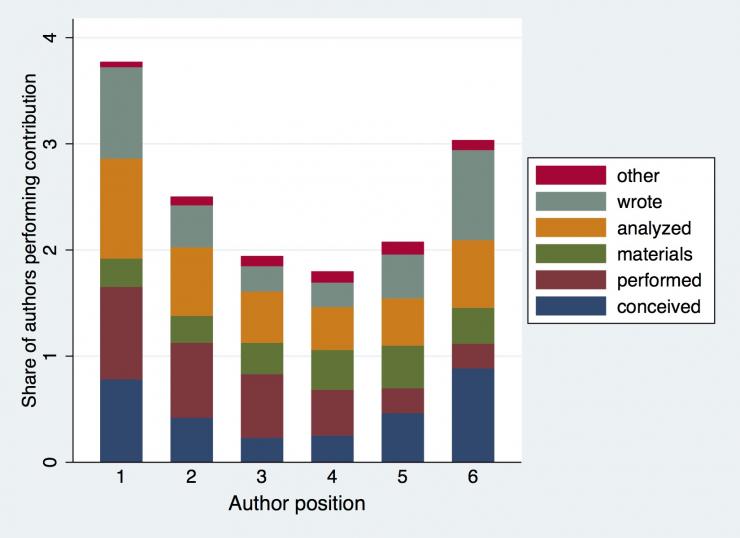Contribution statements and author order on research studies still leave readers guessing
Nov 15, 2017 — Atlanta, GA

Henry Sauermann
Few discussions can be more awkward for a team of academic researchers than the one about whose name should be listed first, last, or even included at all as an author on a publication of research findings.
Although many scientific journals try to provide more details about author contributions by requiring explicit statements, such contribution statements get much less attention than authorship order, according to new findings from a Georgia Tech-University of Passau team.
In the study, which will be published Nov. 10 in the journal Science Advances, the team surveyed more than 6,000 corresponding authors of research studies published in recent years. They found that while researchers evaluating a paper consider contribution statements helpful for understanding the specific skills individual team members brought to the study, they still use author order for deciphering which researchers did how much of the work and deserve most of the credit.
Authorship is a topic that looms large on the minds of researchers. Publications play a major role in career advancement at universities and research institutions, and authorship order is a widely used, but imprecise, way of inferring contributions from researchers.
In part, the problem with contribution statements is that they aren't always available, and when they are, the statements tend to have no uniform structure, said Henry Sauermann, who conducted the research as an associate professor at Georgia Tech's Scheller College of Business.
"The lack of uniformity and detail in contribution statements leaves open the door for varied interpretations, which could be why only a minority of respondents found them more useful than author order," said Sauermann, who's now associate professor of Strategy & POK Pühringer PS Chair in Entrepreneurship at ESMT Berlin.
Among 10 of the most prominent scientific journals, just two offer standardized templates for how to write them and just one requires specificity on levels of contributions. One doesn't routinely publish the contribution statements, even though it requires them for submission.
The research team also examined the relationship between author order and contribution statements on over 12,000 published articles and found that often they are not aligned. While the contribution statements included information about the types of work contributed by each author, they have little information about the level of effort for each author - which was particularly problematic when multiple authors were listed under the same contributions, Sauermann and Carolin Haeussler wrote.
Contribution statements also say little about how important a particular contribution was for project success. "Differences in the importance of particular contributions across projects may explain, for example, why some teams assign prominent author positions to individuals who made primarily empirical contributions, whereas others assign these positions to members whose contributions were conceptual," the authors wrote.
Still, author order has its own problems.
"When we talked to scientists, many think that there are certain norms, and they know how to interpret author order," Sauermann said. "But when you really push, it's not clear at all - at least not at the level of detail we need."
That's further complicated by the fact that conventions of author order vary depending on the research field.
The study also revealed an interesting difference of opinion between junior and senior researchers, with the former caring more strongly about contribution statements and how they are discussed and crafted.
"When we read open-ended responses to our survey questions, we got the impression of a really divided community," Sauermann said. "Some believe that forcing more detail in contribution statements is great, and some are concerned that it could really hurt teamwork and collaboration. It's not that everyone is lukewarm -- many really care."
That level of interest could pave the way for more discussion, which is something that Sauermann said is ultimately needed for the scientific and research community to move forward and add more clarity to the process.
"This is not going to get any easier," Sauermann said. "It's going to get harder as how we perform research changes, and as teams get bigger and more diverse."
CITATION: Henry Sauermann and Carolin Haeussler, "Authorship and contribution disclosures", (Science Advances, 2017). http://dx.doi.org/10.1126/sciadv.1700404

How author position matches up with contribution statements. (Credit: Georgia Tech)
Research News




